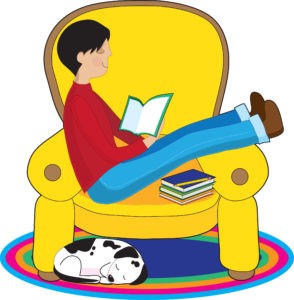
A key reason boys struggle more than girls in school and life: Adults fail to help them get comfortable with reading at a young age.
Boys read less than girls do.
Parents read to boys for shorter periods of time than they read to girls.
Teen girls read almost twice as much as boys on a per-hour basis.
Some thirty-seven percent of male college freshmen, and only twenty-three percent of female college freshmen, say they spend no time reading for pleasure.
More boys than girls struggle with reading and writing.
The average eleventh-grade American boy writes at the same level as the average eighth-grade girl.
Boys start school with a considerable verbal and psychosocial developmental lag (up to eighteen months), behind girls. They often do not catch up until into their late teens—if then.
The majority of reluctant readers are boys.
While seventy percent of children learn to read with no special support, most of the rest—those with problems—are male, nonwhite, and economically deprived.
Boys get most of the D’s and F’s in school grades.
Adolescent males are significantly more likely than adolescent females to be left back a grade.
Boys have a harder time finding books on their own.
Adolescent girls outscore adolescent boys in reading and writing—the gender gap being equivalent to a year and a half of school. In other words, the average high school freshman girl is reading as well as the average high school junior boy.
Boys are four times more likely than girls to be in learning disability programs.
The gender gap in literacy is worldwide. Even in Finland, which boasts the top-ranked students in literacy, girls scored much higher than boys.
Adolescent males drop out of high school at four times the rate of adolescent females (this includes females who drop out to have babies).
Boys have more attitude and are less active in the school community.
Males are more likely to view schooling in general (and specifically literacy) as artificial, even unmanly.
Ninety percent of adolescent discipline problems in schools involve males, as do most expulsions and suspensions.
Boys are the primary victims of violence in schools, and comprise the majority of dead, injured, mentally ill, and substance-abusing adolescents.
The majority of salutatorians and valedictorians now are female. Adolescent females also dominate school clubs, yearbooks, and student government.
Boys are four times more likely to be referred to a school psychologist.
There’s a direct link between comfort with reading and attitude.
“Once they begin to fall behind, they act out because they are bored or disengaged, and a really difficult downward spiral results.”
“Poor reading among boys leads to antisocial behavior.”
Low literacy is related to crime, poverty, and unemployment.
There’s a direct link between comfort with reading and academic achievement.
The most important predictor of academic success is the amount of time children spend reading books; it is even more important than economic or social status.
“The act of reading or being read to develops the mind and increases intelligence.”
“Kids who stop reading start to fall behind their classmates.
They lose ground in vocabulary, in comprehension, in advanced thinking skills, even in the ability to write.”
“The achievement gap between boys and girls is driven primarily by performance differences in literacy.”
Teaching boys science, math, or social studies poses problems if they have difficulty reading the textbook and won’t admit it.
There’s a direct link between academic achievement and life achievement.
With the decline of high-paying work in traditional male occupations, such as manufacturing, and the increase of high-paying work in occupations requiring informational processing skills, men without a college education have been left behind.
A college degree is linked to higher earnings, increased civic participation, marriage and family stability, lower rates of incarceration, and national economic competitiveness in a global environment.
“A college degree today is as necessary to success as a high school diploma was a few decades ago.”
Those with a bachelor’s degree earn upwards of forty percent more than high school graduates, a gap slowly but steadily widening.
Eighty percent of high school dropouts are male.
Eighty percent of convicted felons are high school dropouts.
Sixty-eight percent of the people incarcerated in federal penitentiaries have limited literacy skills.
Sixty-three percent of Canadian social assistance recipients have not completed secondary school.
Boys’ enrolment in institutes of higher education is decreasing.
In the U.S., women earn sixty-two percent of all associates’ degrees, fifty-seven percent of all bachelors’ degrees, and sixty percent of all masters’ degrees.
Boys finish their education less frequently (high school graduation rate of only sixty-five percent), they finish high school with lower average grades (girls average 3.10 GPA, boys average 2.90 GPA), and fewer go to college. Since 1981, more women than men have been enrolling in college.
Between the years 1990 and 2009, the male undergraduate enrolment dropped from forty-five percent to forty-three percent in the U.S.
“Something is not working for boys, but there is little to no direct research on gender and literacy, and not much in the way of support for boys’ literacy,” Jon Scieszka declares on his Guys Read website (www.guysread.com).
We like to think that’s changing, but not fast enough, and certainly insufficiently in terms of information parents receive.
Excerpted from Jump-Starting Boys: Help Your Reluctant Learner Find Success in School and Life, by Pam Withers and Cynthia Gill (Viva Editions). All references (footnotes) contained in the book.

